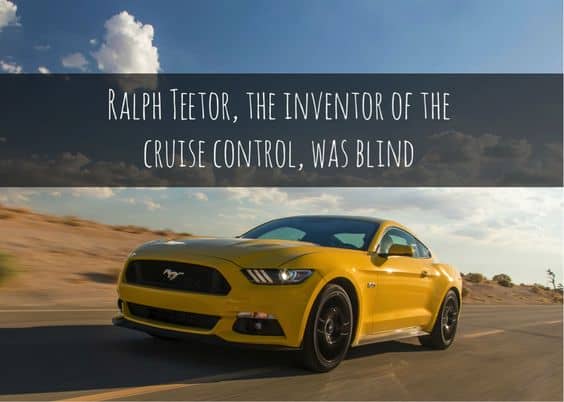Just because it’s a cliche doesn’t mean it’s not true! Necessity truly is the mother of invention, as proven by the story of the invention of cruise control by a blind man. Cruise control is that wonderful thing that keeps us from getting speeding tickets and saves the headache of pumping the pedal on freeways.
Ralph Teetor was an inventor with a special love for automobiles. The man was blinded in a shop accident when he was five but never gave up his fascination with sharp tools. The man was a born genius who went on to attend college and earned respect as the greatest mechanical engineers of his era, ending up as the president of the Society of Automotive Engineers. Teetor is credited for a host of vehicular improvements which includes automatic transmission, and making an automobile that let him move around a vehicle at 25 mph when he was only 12!
Teetor’s blindness resulted in a heightened sense of touch gave him an advantage and helped him invent new things. His exceptional ability to visualize objects helped him apply his engineering skills and solve problems even sighted engineers couldn’t. For example, during World War I, he solved a problem that many engineers were struggling with and developed a new way to balance steam turbines on torpedo boat destroyers.
It was during World War II when Teetor came up with the idea of cruise control. The government slapped a 35 mph speed limit for every car in order to conserve gas and tires, which was logical but impracticable for many hasty drivers, like Teetor’s lawyer. Teetor suffered at the hands of his lawyer’s impatient and rash driving after the ban, so he decided to come up the speed regulator we know as cruise control that can help maintain speed without the driver touching the gas pedal. After a few tweaks and many names such as “controlomatic” and “speedostat,” the cruise control concept was finally used in selected 1958 Chrysler models at an additional cost of $86 option.

